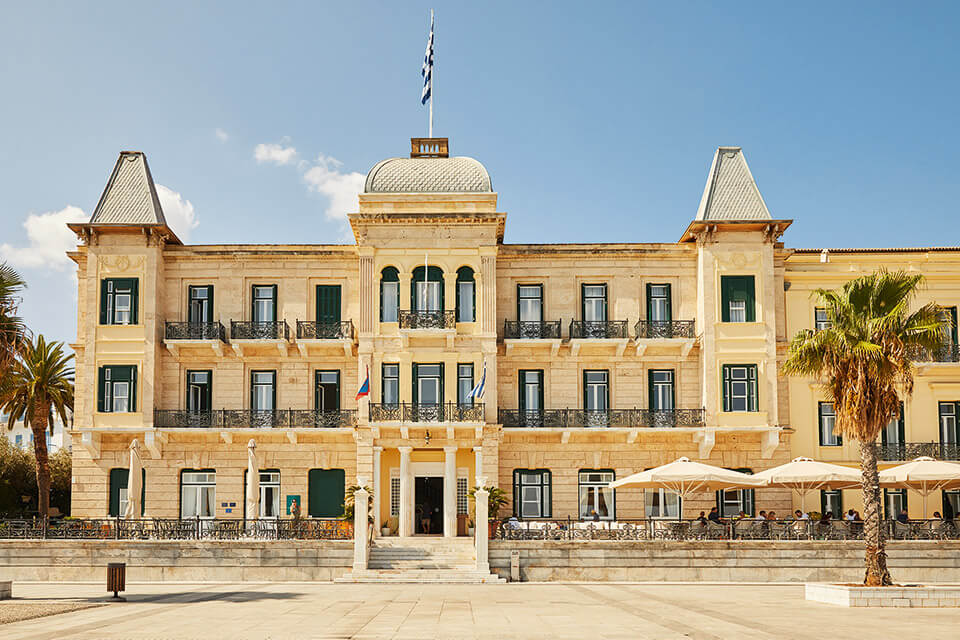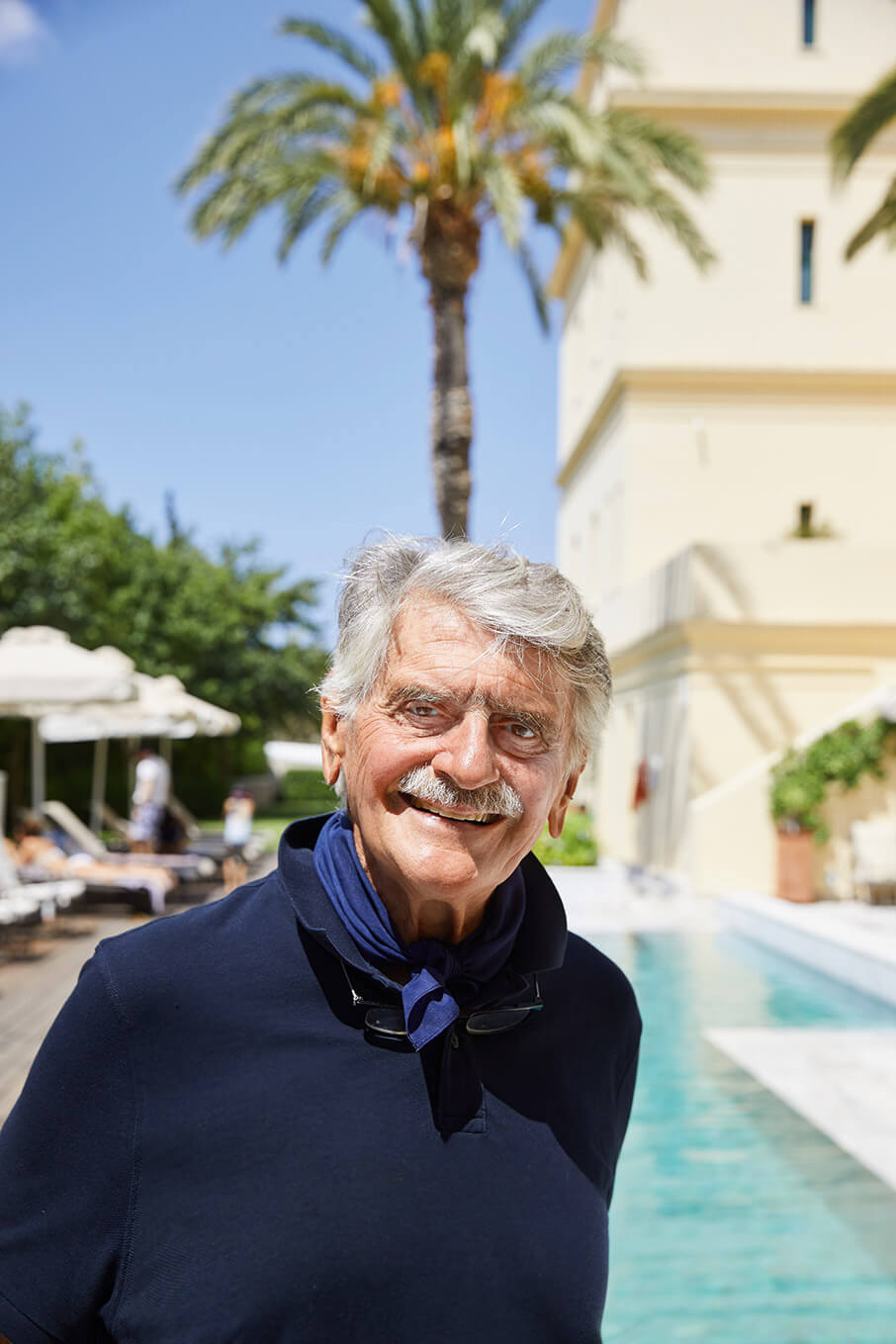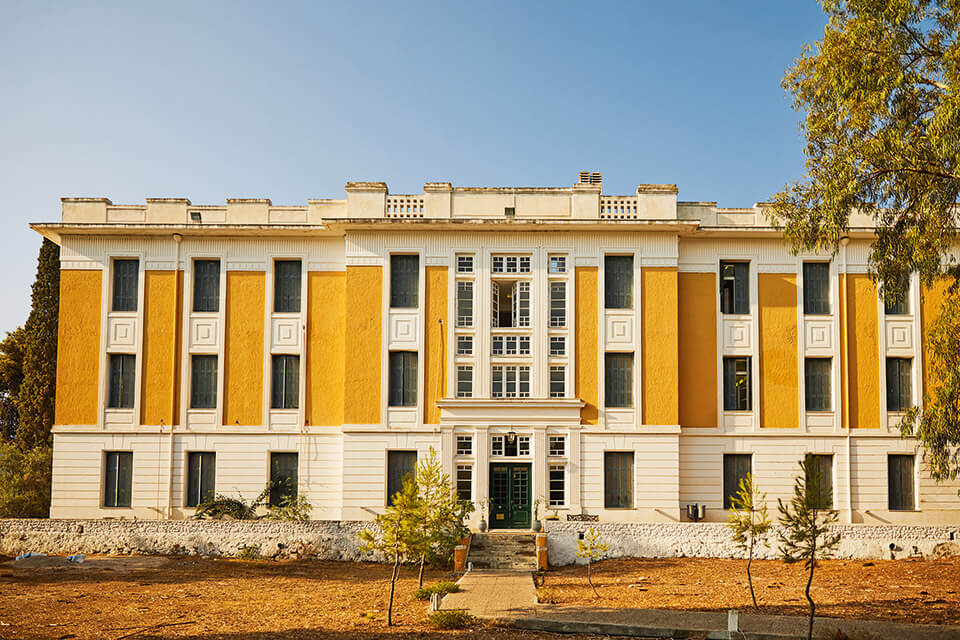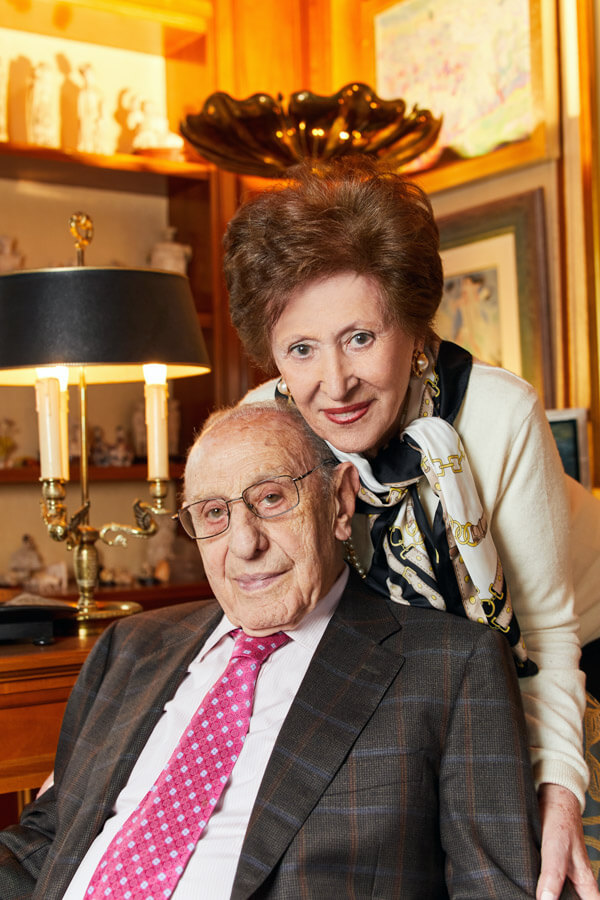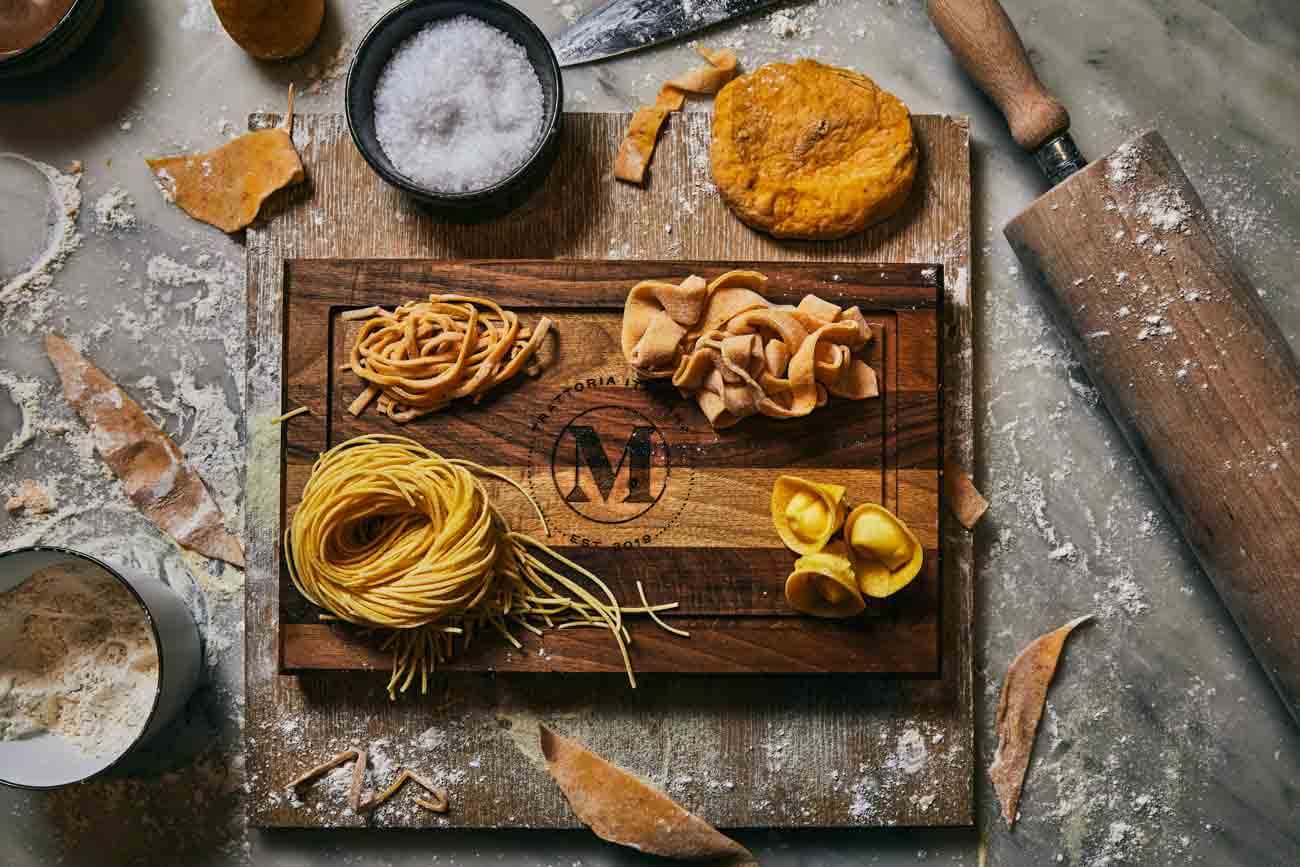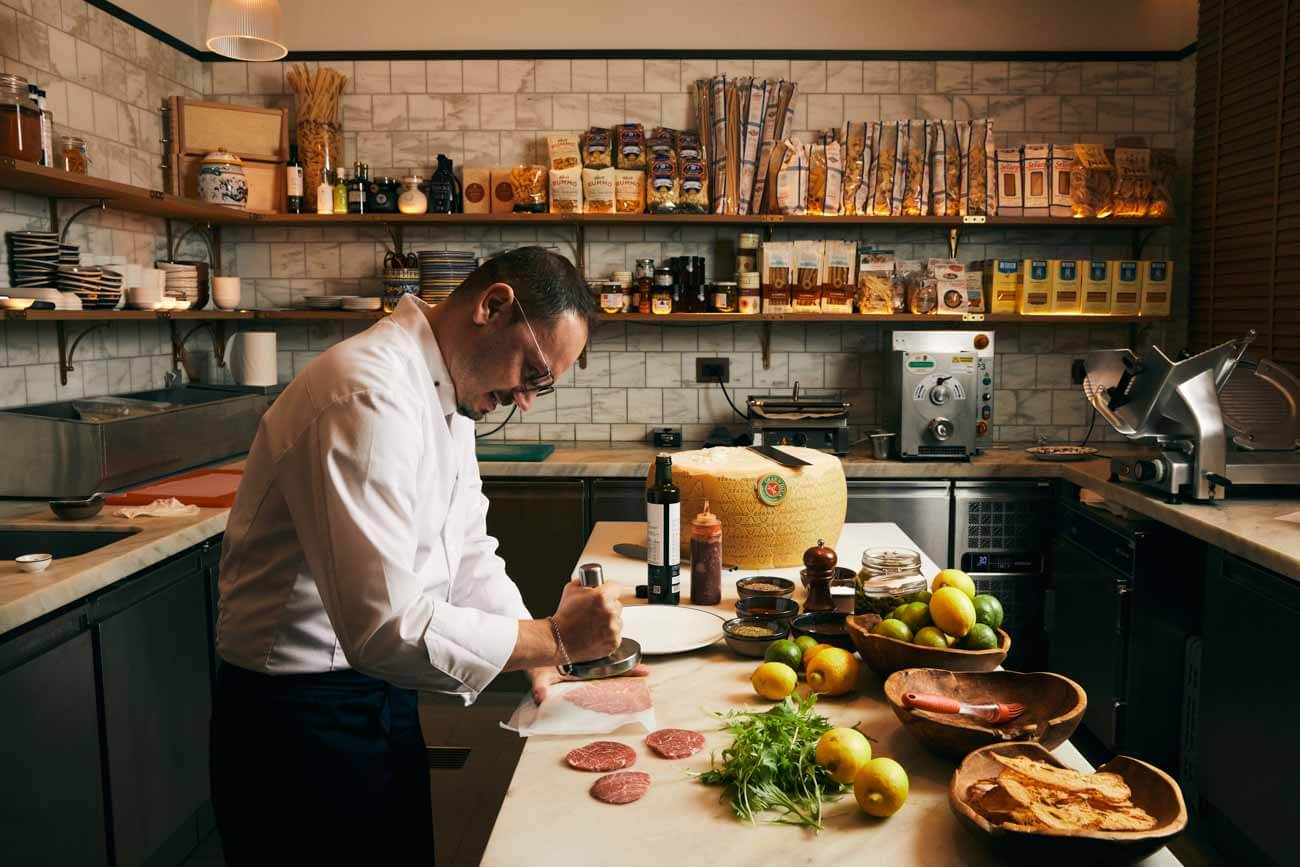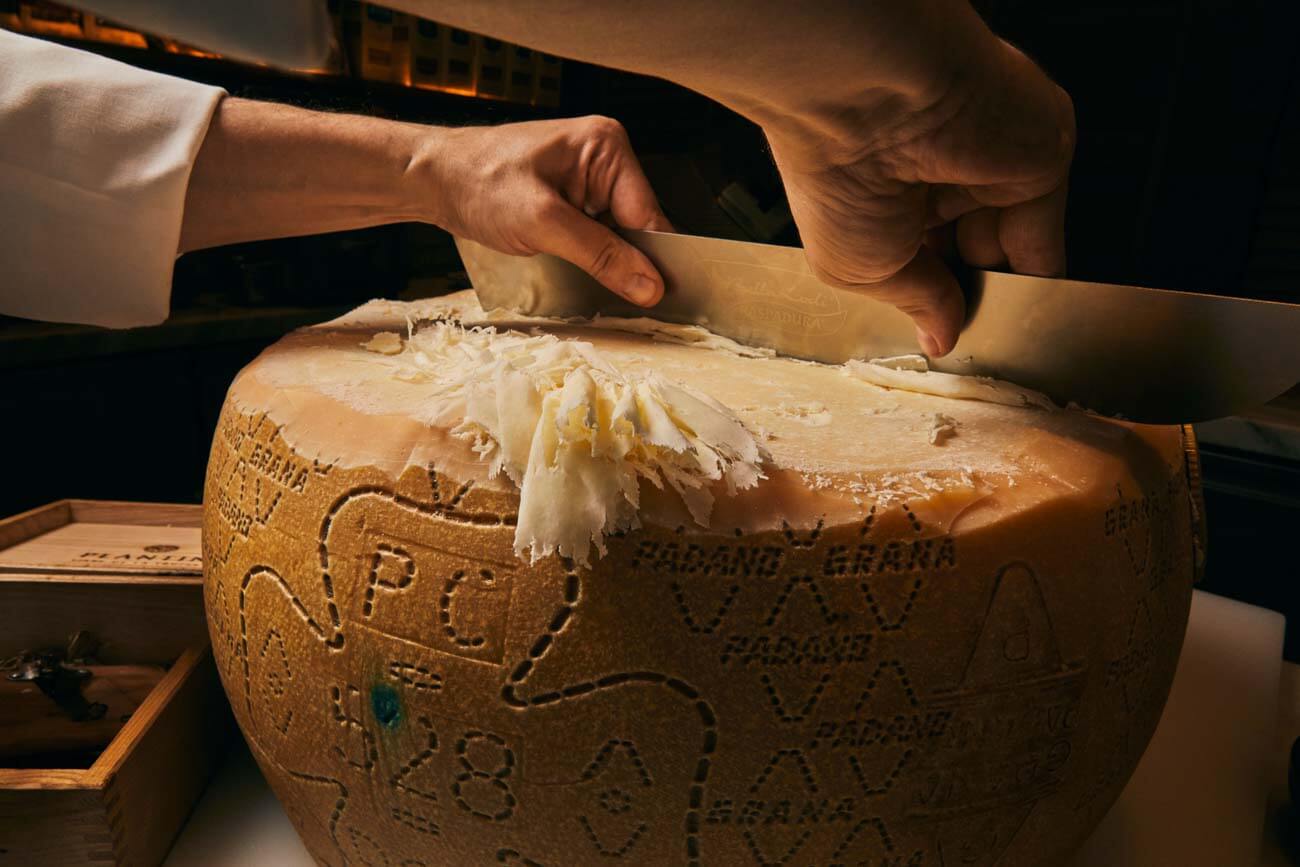MeToo - Violence Awareness
It is with great pleasure that we announce and invite you to the 1st "Gendered Violence - Violence Against Women" Awareness Exhibition.
Baumstrasse, Servion 8 (2nd Floor) Botanikos, Athens, 104 41
June 10-11, 2023
1.30 p.m. - 9.30 p.m.
Specifically, the European Network Against Violence (ENV) is organizing a two-day event on June 10-11, 2023, with the aim of raising public awareness about domestic violence against women, sexual violence and the relationship them with our patriarchally structured society. The action is implemented within the framework of the #MeNow_MeToo initiative (www.menowmetoo.gr) in collaboration with the Olympian Sofia Bekatorou.
Through works of art, speeches, theatrical events and workshops, the goal of the E.D.k.B. is to raise concerns and tell stories of women or artists who want to present them through art and visual creation.
More than 20 artists participate in the exhibition with works of art (paintings, photographs, theatrical performances, etc.). In the area of the exhibition, there will also be a bazaar with handmade items of female survivors of domestic violence and/or sexual violence as well as volunteers of the E.D.k.B.
The exhibition will be open to the public 13.30 – 21.30. The entrance is free. On Saturday and Sunday evening there will be events (speeches, theatrical events, discussion).
Artists: Efmorfia Vallas, Dimitris Vlaikos, Stavroula Geriki, Ioanna Georgopoulou, Anastasia Giannoulaki, Kosmas Dalaklis, Electra Etaridou, Angelina Zoumbouli, Tzortzia Kosmatopoulou, Konstantinos Kalfountzos, Dora Kotsi-Felicsi, Mary Kyraki, Emmanuel La pidakis, Aikaterini Mavroudi, Panagiotis Xoulogis, Christina Papatoli, Chrysoula Skepetzi, Vicky Skotida, Maria Tsouknakis, Ariadni Phytopoulou, Georgia Handzi, Alexandra Christakopoulou, the theater group "She and They" (Elene Alifragki, Spyros Anastasinis, Tasos Chalas, Andreas Psyllias)
Event: https://www.facebook.com/events/761715388965422/?ref=newsfeed
See the detailed Program here
The proceeds will be allocated for the purposes of the E.D.k.B. and covering the costs of legal support for abused women and/or children.
TAVERNA for Gastronomos Magazine
In this photo story about Taverna for Gastronomos magazine, I shared my angle of view and my respect to all these people who in daily basis keep alive the living history of the greek culture. In all these little spaces, mostly away from the crowd,
humanity and real contact have the first role. The philoxeny and the devotion of the owners, make these spaces ataxic and creates a space in where different people could connect, share their personalities and create culture.
"We enter the 42 oldest haunts of Athens and the countryside of Attica and talk to the people who for decades have held the reins of famous family shops that have written their own history in Athenian gastronomy.
From “Athinaikon” and “Lelouda” to “Oikonomou” and “Diporto”, the historical Athenian taverns that from being haunts of the popular strata became a favorite culinary destination of all social classes.
We select and collect the famous recipes from the most famous taverns of Athens and the surrounding area and present them in detail, with their secrets and the selected ingredients that established them: the fried meatballs of “Katsogiannos”, the yuvetsi of “Kitsoula”, the kakavia of ” Pezoula”, the rooster with thick macaroni of “Rhamnouda”, the bekri meze of “Vardi”. 40 iconic recipes immortal and timeless over the decades.
We learn the history of the tavern, from ancient Athens to the present day and gather in a glossary the old and new terms associated with the tavern and its culture.
We met people of letters and art in historic taverns and let them explain to us through their own experiences and reflections the meaning and essence of the tavern. Pantelis Voulgaris, “Deipnosophist” Christos Zouraris and Christos Chomenidis discuss and reflect on famous dishes of the Greek tavern and George Pittas gives his valuable advice to young tavern owners, through experience as well as his long-term study of history of the tavern.
How much did the Athenian tavern influence literature and music? Papadiamantis, Polemis, Karyotakis, Tsirkas were inspired by the popular atmosphere of the tavern and transferred it to their works, while theories and existential anxieties unfolded on its tables from the companies of Seferis, Papagiorgis, Papanoutsou. But the tavern also left its indelible mark in the popular song that praised it and captured its atmosphere like no other genre.
The tavern in art: Painters and photographers from Hatzikyriakos-Ghikas and Topazis to Manousakis, Craxton and Zavicianos each captured with their art and their eyes the warmth of the tavern and transferred it entirely to their canvas and film . Along with them is the self-taught popular painter Giorgos Savvakis, who with his blinding colors decorated over 40 taverns in Plaka with his murals, vividly capturing their aesthetics and patrons".
International Womens Day
From the International Womens Day campaign of Grand Bretagne Hotel. "Celebrating our lovely ladies, our heroes, our daily inspiration. Happy #InternationalWomensDay to all the strong, powerful women across the world. Keep shining!"

Vasilis & Marina Theocharakis
Vassilis and Marina Theocharaki are the inspiration and guiding force of the Theocharakis Foundation.
Vassilis Theocharakis is a multifaceted personality at the helm of a dynamic and diversified group of large-scale businesses: from the automotive industry, banking, manufacturing and healthcare, to cosmetics, digital systems and shipping.
An equally important aspect of his life is painting. Alongside his legal studies, he attended classes with the great Greek painter, Spyros Papaloukas. His first exhibition was in 1957 at the International Youth Festival in Moscow and since then he has exhibited his works inside and outside Greece, some of which adorn important public and private collections. He has been awarded the titles: Chevalier de La Légion d'Honneur of the French Republic, Archon Cartulary by the Ecumenical Patriarch and of the Order of the Rising Sun by the Emperor of Japan. Marina Theocharaki has had an active relationship with the arts for many years, with many exhibitions and publications to her credit.
Portrait photography for Grand Bretagne Magazine.
Headshot photography for Lena Manta
Headshot photography of the greek author Lena Manda. She is Greece’s best-selling women’s fiction author of almost 2 million copies of her books sold in Greece and Cyprus alone, and whose books have been sold to Albania (THE HOUSE BY THE RIVER/LOVE LIKE RAIN/COFFEE BREWING ON THE EMBERS/THE LAST CIGARETTE/THEANO, SHE-WOLF OF ISTANBUL), Bulgaria (WALZ WITH 12 GODS), China (WALZ WITH 12 GODS), Italy (THE HOUSE BY THE RIVER/LOVE LIKE RAIN), Serbia (COFFEE BREWING ON THE EMBERS/LETTER OF GOLD), Spain (THE HOUSE BY THE RIVER), and Turkey (THEANO, SHE-WOLF OF ISTANBUL/THE HOUSE BY THE RIVER) as well as World English rights (THE HOUSE BY THE RIVER/THE LETTER OF GOLD (Rights under offer)). She is a true commercial voice to be reckoned with and every new book is a tour-de-force in the Greek publishing world.Lena Manta was born in Istanbul, Turkey, to Greek parents. She moved to Greece at a very young age and now lives with her husband and two children on the outskirts of Athens. Although she studied to be a nursery school teacher, Lena instead directed her own puppet theater before writing articles for local newspapers and working as a director for a local radio station. Manta was proclaimed Author of the Year in both 2009 and 2011 by Greek Life & Style magazine and received the 2016 Public Book Award for Inspirational Heroine for her book ONE LAST APOLOGY. With a charismatic personality that exudes positivity and inspires all who meet her, she is extremely popular in the press as well as social media and Facebook where she is immensely active. Just as her stories and characters captured Greek readers’ hearts, so we believe that they will continue to do the same outside Greek borders. PSICHOGIOS PUBLICATIONS have published 17 of her books – mainly novels. All of them have sold around 100,000 copies each while her best-seller, THE HOUSE BY THE RIVER, has sold over 250,000 copies. Her books have been translated into English, Turkish, Albanian, Italian, Spanish, English, Chinese, Bulgarian, Serbian and Arabic. her book was released in 2001. Sixteen other novels of hers, as well as two collections of short stories, have been published by Psychogios publications. Her books have sold two million copies. Lena's Manta portrait photoshoot took place at her place in Athens.
Dimitra Milona Headshot
Headshot photography for the sailing world champion Dimitra Milona. She started sports at the age of eight. She received her first important distinction in 1993, where she won (as skipper) the Panhellenic championship (Overall, and women) of type 420 boats. In the same year, she also won 5th place with her crew in the Laser II world championship in Lago di Garda . This was the beginning of an impressive sporting career. From 1993 to 2002, she championed in Panhellenic, Balkan, Mediterranean, Eurolymp, but also in global competitions, such as the "Tropheo Princesa Sofia" in Majorca (overall and women's gold medal in the 420 boats). Her journey culminated with a bronze (1998) and a gold (1999) medal at the world championships. Since 2001 she has been serving as an officer of the Navy (Naval Cadet School and NCO School (SMYN)) and lives in Aegina with her family.
Four Seasons Athens Hotel food photography
In this food photography hotel campaign for Four Seasons Palace Hotel Athens, the chef of the restaurant Sergio Favata from Sicily, learned to make tomato sauce in a jar (conserva di pomodori) when he was a child. Next to his grandmother, he also learned the recipe for oregano focaccia, which today takes 35-40 hours to prepare in the kitchen of Mercato. Imagine walking into a delicatessen with fine Italian products – from cheeses and cold meats to olives, breadsticks and many types of bread. And what do the two Italian chefs not bring from their homeland: excellent Acquerello Carnaroli rice, anchovies from Sicily, roe from Sardinia, San Marzano tomatoes, Pecorino Fiore Sardo D.O.P, Pecorino al Tartufo, Caciocavallo di Grotta from Puglia, Gorgonzola, and of course Buffalo Mozzarella D.O.P.
It’s one of the Mediterranean’s most enduring traditions: family and friends gathered around a heaving table, decompressing and reconnecting over delicious dishes made with love. A new weekly reason to bring loved ones together with their grand Pranzo Della Domenica – a sensory recreation of the traditional Sunday brunch, Italian style.
“In Italy, just as in Greece, the traditional Sunday lunch is the glue than bonds families and friends together,” comments Sicilian-born Chef Sergio. “Antipasti platters, succulent seafood, grilled meats, fresh homemade pastas – my earliest memories are of huge sharing plates enjoyed to a soundtrack of chatter and laughter.”
It’s this convivial scene made not just for the Hotel food photography, but in real– equally familiar to Tuscan-born Chef Roberto – that informs the traditional family-centric spirit of each Mercato Sunday Brunch. Light-as-a cloud Foccacia (made to Chef Sergio’s grandmother’s recipe) heads the breads and grissinis that begin the lavish buffet spread: as abundant and authentic as Mercato’s Italian market name-sake.
The finest cuts of Prosciutto, Capocollo, Salame and Pancetta vie for space with creamy artisanal cheeses and a Seafood & Raw Bar packed with Fine De Claire Oysters and Clams, Marinated Mussels and Seabass Ceviche. Salads range from simple Caesar to the melt-in-the mouth refinement of Beef Tenderloin Carpaccio with Rocket, Parmesan and Truffle Mayo – or create one at the Salad Bar. Barbecue favourites include zesty “Sicilian” Grilled Baby Chicken and Pork Spare Ribs that fall off the bone, and that’s before one even reaches the freshly handcrafted pastas and carving stations.
Grande Bretagne Magazine Cover
In the imposing Alexander's Bar voted as the Best Hotel Bar in the world by Forbes magazine, the choice of drinks will impress even the most demanding connoisseur. The bar offers a wide range of unique spirits, skilled bartenders and friendly waitresses, while the rare 18th century handmade tapestry that hangs above the bar depicts Alexander the Greats entrance into Gavgamila, and is one of the oldest trademark items in the Hotel.
I took this portrait photograph of the bartender in front of the magnificent handmade backround of the bar. More magazine covers..
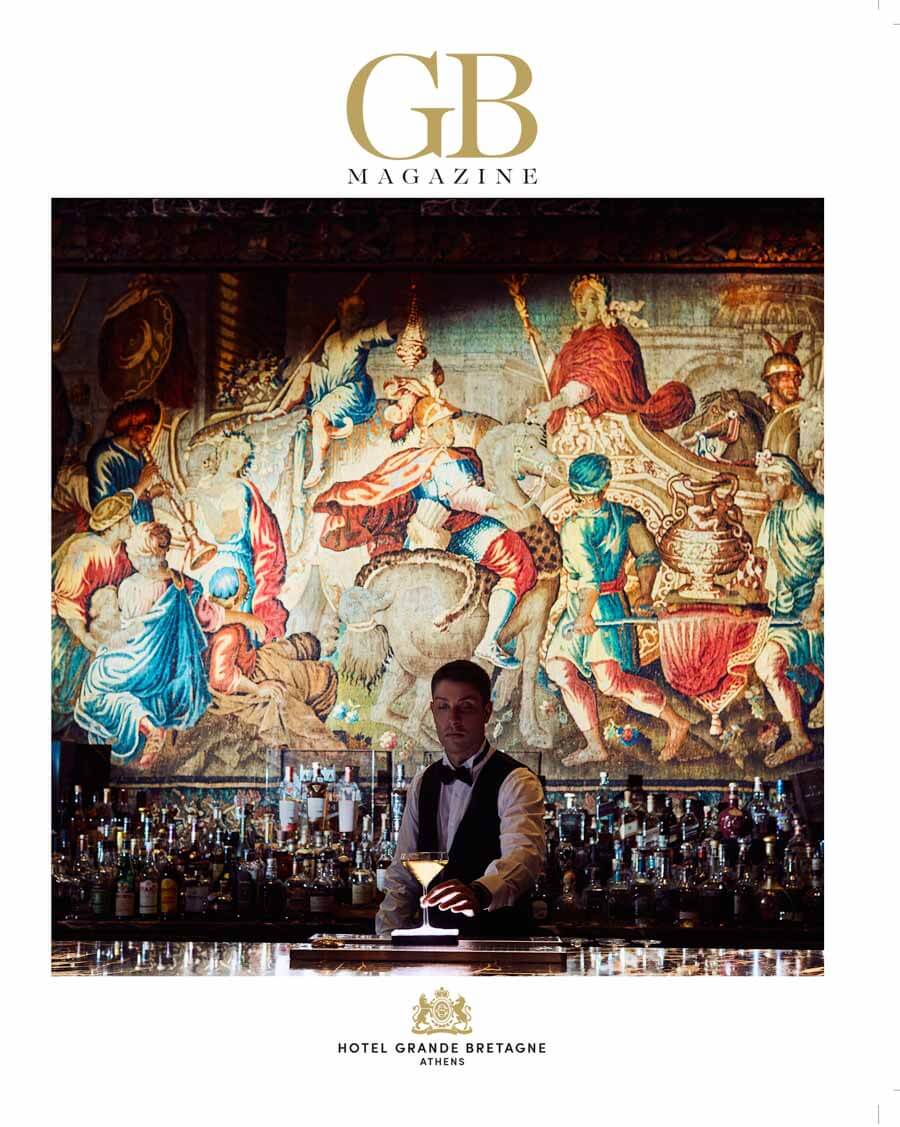
Christos Chomenidis
Portrait Photography if the novelist Christos Chomendis for Greece-is.com.
Christos Chomenidis (Greek: Χρήστος Χωμενίδης) (born 3 August 1966, Athens, Greece) is a Greek novelist. He studied Law at the University of Athens and in Moscow and Communication Studies in Leeds. He worked as a lawyer before becoming a full-time writer.[1] His book Νίκη won the 2021 European Book Prize in the Novel category
People of Spetses talk about Spetses
For the portrait photography published on the tribute in Taxidia Magazine Kathimerini, I have traveled to Spetses Island with the editor Eleftheria Alavanou. Five people from Spetses introduce us to the beautiful island of Argosaronicos from their own point of view.
Artist, 30 years old, studied visual arts in Amsterdam, lives in her great-grandfather's house near Analipsi. In the summer she works at the Baraka gallery, in the winter she is busy with her own artistic work, fishing and walking in nature. Eva Vassiliou is one of the five locals who help us get to know the island of Regatta and Armata through another lens. All of them have seen the Spetses of the four seasons: from the fever of summer to the undisturbed quiet of winter. All of them have a substantial relationship with Spetses, because their lives are connected to the basic materials from which the island is made: the sea, the landscape, history, the people who marked it, art. Everyone, in short, knows them deeply.
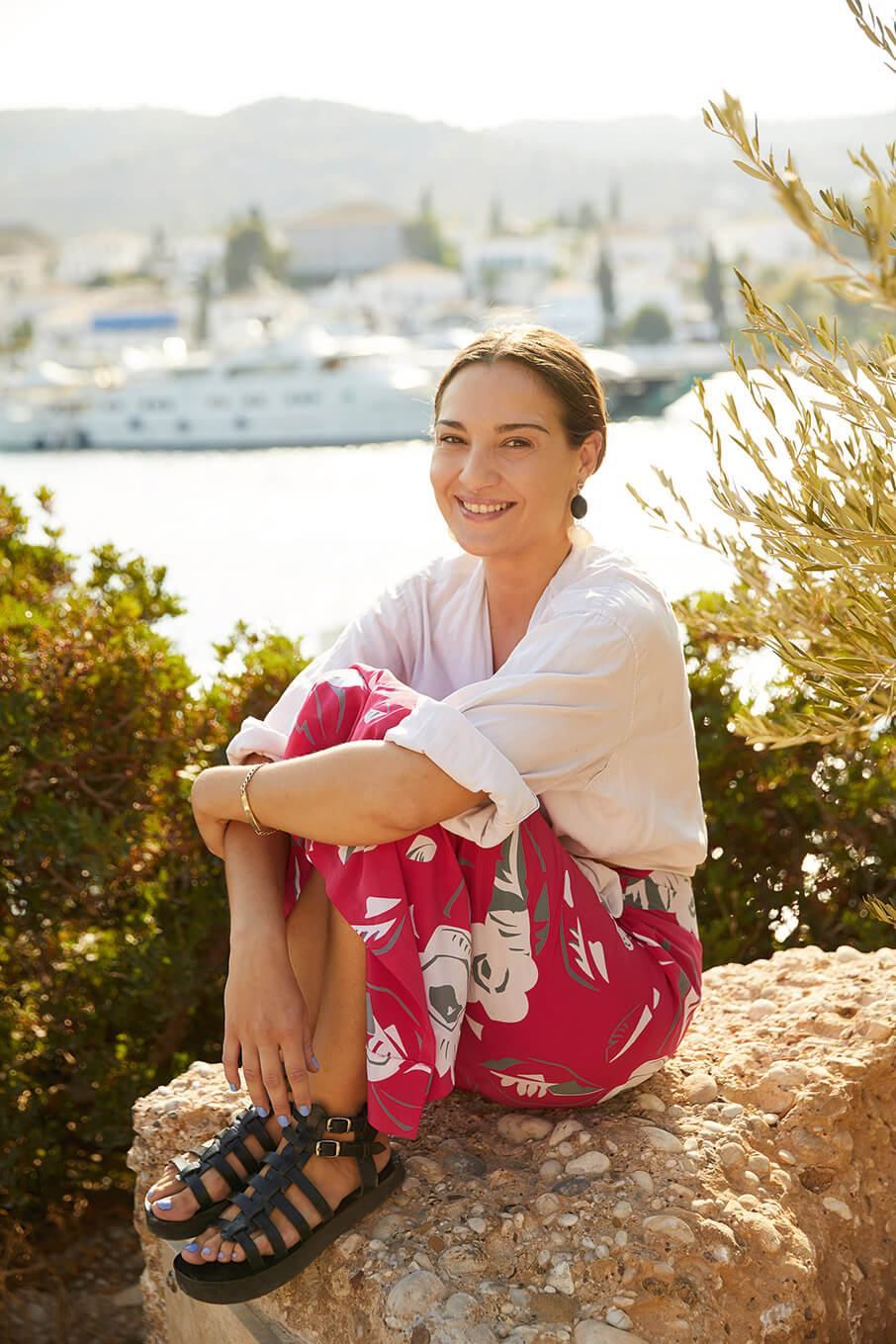
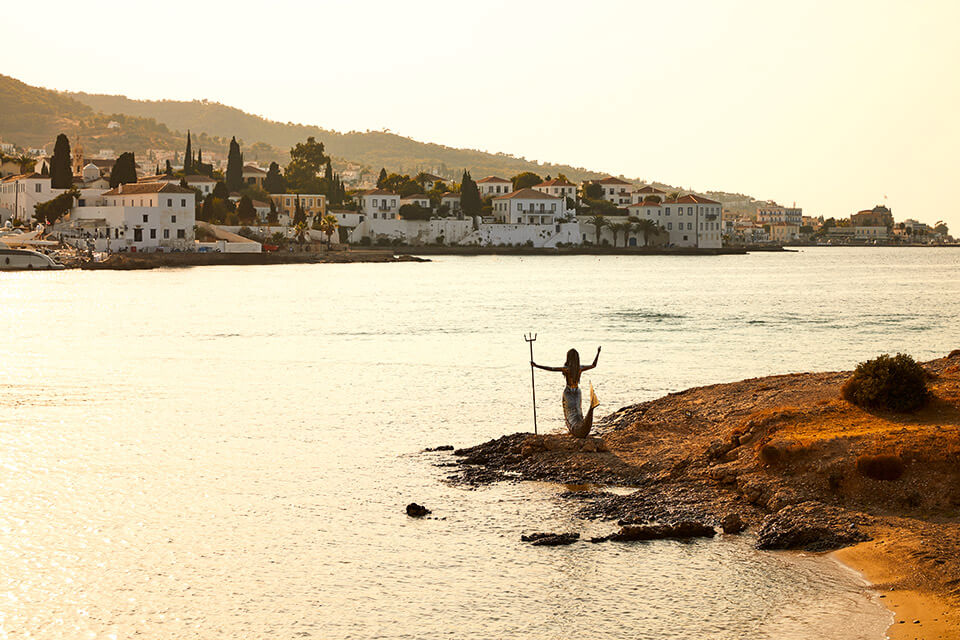
Portrait photography of the tribute includes a selection of different characters that are residents on the Island of Spestes. Grigoris Katsouranis, with more Augustus on his back, but with similar energy, since he is evergreen and energetic like a little kid. Mr. Grigoris is one of the few craftsmen who know the art of shingle in Spetses, a "difficult job", because "you have to sit down for eight hours laying shingles", resulting in pain in the knees, hands and back you. Despite the effort, a craftsman can in eight hours make a 2 m2 pebble, often on a marine theme, such as boats, mermaids, fish, dolphins, octopuses, although there are more strange, as a belfry or a breeches in a fez. To a certain extent, however, there is a recycling of the subject matter in the designs ("we resurrect the old ones"), which probably contributes to the aesthetic harmony, limiting the dissonances. The nice thing about pebbles is that they decorate both the public space and the houses, in other words they express the Spetsian society as a whole, but also the Spetsian landlord. In personal time, when he is not busy with pebbles or other tasks, Mr. Grigoris usually goes to the Cafe to drink evening coffee. Not meraklidiko Greek with cream, as I expected him to tell me, but an iced Fredo espresso. He swims with his wife in Agia Marina, attends church in Analipsi, spends the summers at his home in Kokkinaria and the winters at his house in Dapia.
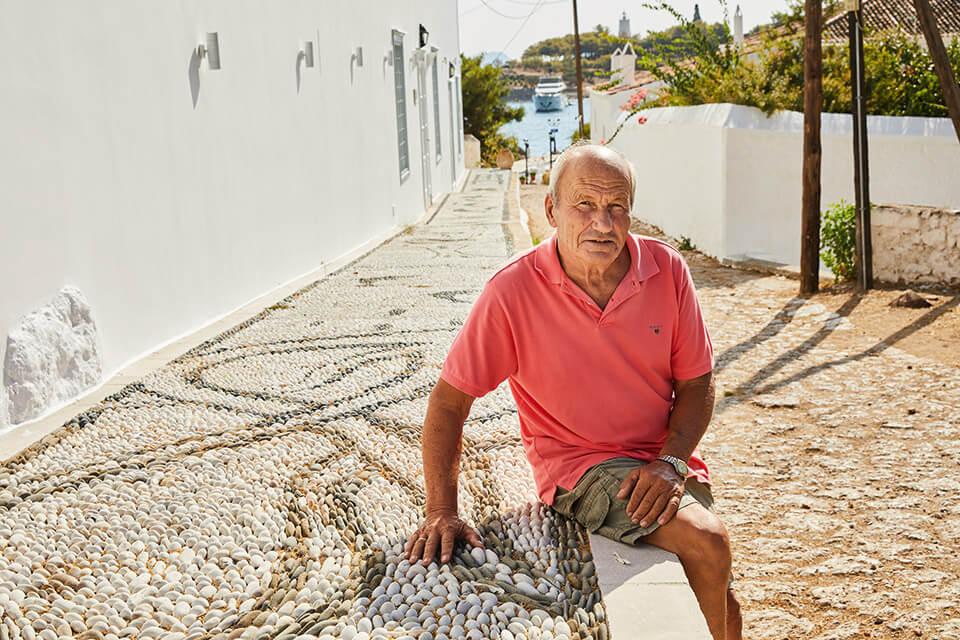
The custodian of another traditional art, which is also identified with Spetses, is Pantelis Korakis, a second generation ship carpenter, who owns one of the island's seven tarsanas, in the old port. Pantelis has spent his entire life in Spetses, with the only break being when he joined the army. He began learning at the age of 10-12 with his father, who represented an older generation of shipwrights who believed that art was not taught, but stolen. "If you caught it, you caught it. That was the mentality of the old ones." Tarsana was named after him 23 years ago. The distance from his house is two minutes by motorbike and his daily working life includes an open-air workshop in front of the sea, with discarded wood, geese coming and going, himself barefoot and behind him a dog without a name, who follows him everywhere, even when he gets inside the boats. People come, his sister makes coffee, his friends show up, drink a beer, leave. The place looks like a coffee shop. "All traditional tarsanas are coffee shops," he tells me. They are also places of hard work, however, since Pantelis repairs and builds wooden scaffolding, using the designs he inherited from his father. It deals with, among others, amateur or professional fishing boats and holiday boats staying in Spetses. "A wooden boat is like a friend. It's not impersonal, a lot of people have worked on it." He himself has a 9-meter trachantiri, "Agia Marina", which he built a few years ago with his own hands.


Miaranda Markou, I imagine that she loves the sea very much, since he works next to it, by it and for it. But there is a Spetsiotissa who I think loves her more or in a different way. Miranda Markou is thirteen and a half years old, a 2nd High School student. As a child, he used to go swimming at Scholes beach, below the Nautiko Omilo, and he would watch the boats dock. "I liked it all and decided to start sailing." She was not six years old, but she was drawn to the sea and the freedom of the sport. Started with bug, moved to optimist and now has a laser. Listening to her talk about the positives of the laser as a boat, her desire to go to Piraeus to see the Olympiakos sailing academy, and that she has heard very good things about the Aegina club, I think how much of a… vitamin that is for a teenager dealing with the sea in winter and summer and not with the computer, how firmly the character and self-confidence are built when he learns to command a boat from a young age. And above all, how nice it is to be thirteen and a half years old, to live on a small Greek island, to live in the middle of nowhere, in the city, but outside of Dapia, and your means of transportation to school, friends and your group is by electric skate, on foot or on your parents' motorbike.

In the portrait photographs except the people, one can see the diversity of the Island. Spetses, however, is identified with another captain, older, a woman who far exceeded the limitations imposed by society on her gender, after becoming "the first female admiral in world naval history", as Pavlos Demertzis-Boumboulis tells us for Laskarina Bouboulina, great-grandmother of his great-grandfather. Pavlos is 33 years old, a modern man, without a dress or tsarouchia, but who carries a heavy, distant and at the same time familiar name. A name that would have been lost from his family had it not been for the intervention of his grandfather, Christos Demertzis, husband of Euphrosyne nee Bouboulis, who "with an official request to the Ministry of the Interior requested that Bouboulis be added to his son's name, that is to say my father, lest he perish. That's how we have both surnames, Demertzis-Boumboulis". What is it like growing up on the island of Bouboulina with that last name? "When I was a kid, it wasn't that easy. First of all, we grew up with a museum over our heads. They chased me at school to do every play, to say every poem.

Growing up, I understood what Bouboulina is, what it means to the whole world and what duty I have towards this name." Pavlos, together with his mother and siblings, is in charge of the Bouboulina Museum, which is housed in the captain's mansion. He spends the summers on the island, the winters between Spetses and Athens. "September and October are beautiful months in Spetses. In winter it's us and the cats, which of course has a beauty, the island still smells of pine and thyme". As for the museum, it remains closed during the winter months. Bubulina is sleeping. Until next summer when the island wakes up, she will wake up too, and she will come to life for another year through the stories of her descendants.
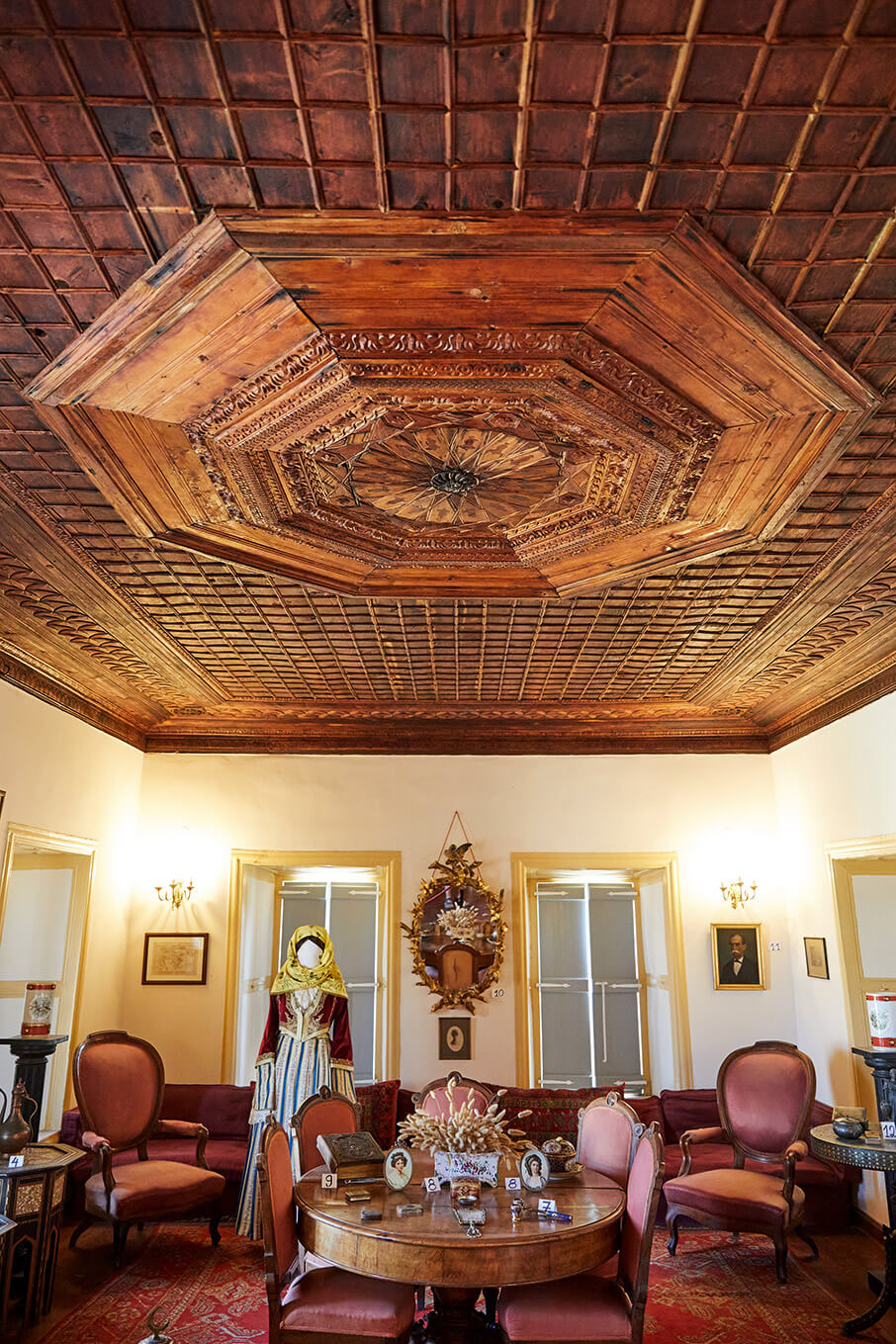
In recent years, Spetses was marked by two people. The first is Boubulina. The second is Sotirios Anargyros (1849-1928), a Speciotian immigrant who made a huge fortune abroad. Its history and its relationship with the island cannot be described here, they need a book. Among many other things, Anargyros created the Anargyrio and Korgialenio School (which functioned as a college until the 1980s), reforested Spetses, which had been deforested for logging and farming, envisioned and built Posidonio, one of the most beautiful hotels of Greece, which in 2014 turned 100 years old. Since 2009 it has been renovated by the Bordonis family. As Mr. Manolis Vordonis mentions, Anargyros protected it, ensuring that it cannot be sold by the Anargyriou Foundation or change its use beyond that of the hotel. For the plans, Anargyros and his architect traveled to the south of France, took images and ideas from the resorts of the French Riviera and transferred them to the beach of Spetses. Seeing it today, restored to the original standard, one is bewildered by the strange beauty of a landmark that has something foreign and yet something so peculiar. Painted in light tones, with turrets and columns, the Poseidon combines influences and currents. The main thing that differentiates it from the luxury accommodations of today is that it is not of pharaonic size. The entrance, the living room, the garden, the pool are made on a human scale so as a guest you feel comfortable. Passing through the outer door of Poseidonio, you feel that someone is waiting for you inside.
